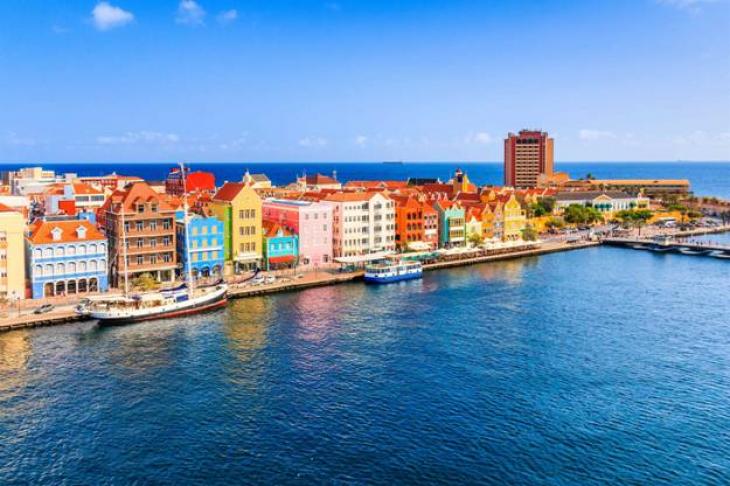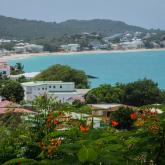
Curaçao, a gem in the Caribbean Sea, offers visitors a rich tapestry of experiences that extend far beyond its pristine beaches. From its vibrant culture and historical landmarks to its diverse culinary scene and thriving ecotourism, the island beckons travelers to explore its many facets.
Cultural Vibrancy and Historical Significance
The capital city, Willemstad, is a UNESCO World Heritage Site, renowned for its colorful Dutch colonial architecture and historic significance. The city’s districts, such as Punda and Otrobanda, are separated by the Sint Anna Bay and connected by the iconic Queen Emma Bridge. Visitors can wander through narrow streets lined with pastel-colored buildings, visit the Mikvé Israel-Emanuel Synagogue—the oldest surviving synagogue in the Americas—and explore the Kura Hulanda Museum, which delves into the island’s complex history, including the transatlantic slave trade.
Culinary Delights
Curaçao’s cuisine is a delightful fusion of African, Dutch, and Caribbean influences. Local markets, such as the Floating Market in Willemstad, offer fresh produce and seafood, providing a true taste of the island’s offerings. Traditional dishes like “keshi yena” (stuffed cheese) and “pastechi” (savory pastries) are must-tries for any food enthusiast. Additionally, the island is known for its namesake liqueur, Blue Curaçao, made from the dried peels of the Laraha citrus fruit, adding a unique flavor to various cocktails.
Ecotourism and Natural Beauty
Beyond its bustling urban areas, Curaçao boasts a wealth of natural attractions. The Christoffel National Park, home to the island’s highest peak, Christoffel Mountain, offers hiking trails that wind through diverse ecosystems, showcasing exotic flora and fauna. Shete Boka National Park features dramatic coastal landscapes where powerful waves crash into underground caverns, creating a mesmerizing spectacle. For those interested in marine life, the Curaçao Sea Aquarium provides interactive experiences, allowing visitors to engage with the island’s aquatic biodiversity.
Adventure and Recreation
Adventure seekers can explore the island’s numerous caves, such as the Hato Caves, adorned with stalactites and petroglyphs left by the indigenous Arawak people. The island’s trade winds make it an ideal location for windsurfing and kiteboarding, particularly along the southeastern coast. Golf enthusiasts can enjoy a round at the Old Quarry Golf Course, set against the backdrop of the Caribbean Sea and the Tafelberg Mountain.
Curaçao is more than just a beach destination; it’s an island rich in culture, history, and natural beauty. Whether you’re wandering through the vibrant streets of Willemstad, savoring the local cuisine, or exploring its diverse landscapes, Curaçao offers a multifaceted experience that caters to a wide array of interests.
Discovering Trinidad & Tobago: A Journey Beyond the Beaches
Trinidad and Tobago, two beautiful islands in the Caribbean, are often celebrated for their lively culture, stunning natural landscapes, and warm hospitality. While the islands are famous for their beaches and vibrant Carnival celebrations, there is much more to experience, from exploring rainforests and wetlands to indulging in the diverse flavors of local cuisine. Whether you’re seeking adventure, relaxation, or a deeper connection with the island’s history and culture, Trinidad and Tobago offer something for every traveler.
Natural Wonders: A Playground for Adventure
Trinidad and Tobago’s landscape is a stunning blend of dense rainforests, wildlife sanctuaries, and tropical wetlands. The islands are home to the Asa Wright Nature Centre in Trinidad, where visitors can walk through lush trails and spot various species of birds and animals in their natural habitats. Trinidad also features the Pitch Lake, the world’s largest natural deposit of asphalt, where you can walk across the unique, blackened surface while learning about its fascinating geological properties.
In Tobago, the Main Ridge Forest Reserve offers trails through verdant rainforests, where you’ll encounter exotic plants, towering trees, and a chance to see hummingbirds and other wildlife up close. For those who love diving, Tobago’s Buccoo Reef and the Nylon Pool are must-visit destinations. The clear waters of the reef are teeming with vibrant marine life, perfect for snorkeling or diving enthusiasts.
The Spirit of Carnival: A Cultural Experience
Trinidad’s Carnival is world-renowned for its exuberance, vibrant costumes, and infectious rhythms. Every year, thousands of locals and tourists come together to celebrate the island’s culture through music, dance, and colorful parades. But Trinidad’s cultural offerings are not limited to Carnival. The island is home to calypso, soca, and steelpan music, all of which play a significant role in the country’s rich musical heritage.
In addition to music, the island celebrates a variety of festivals throughout the year, such as Divali, the Hindu festival of lights, and Eid-al-Fitr, which mark the cultural diversity of Trinidad and Tobago. Experiencing one of these cultural festivals allows travelers to understand the traditions, beliefs, and vibrant lifestyle of the island’s inhabitants.
A Taste of Trinidad and Tobago: Culinary Delights
Trinidad and Tobago’s culinary scene reflects the diverse cultural influences that have shaped the islands. From street food to fine dining, the flavors are bold and varied. In Trinidad, be sure to try “doubles,” a popular street food consisting of curried chickpeas served in flatbread. On the sweeter side, “pastelles” are a favorite during the Christmas season, a savory meat or fish-filled dough wrapped in a banana leaf.
Tobago is known for its seafood, with dishes like curry crab and dumplings, which offer a taste of the island’s fresh catch. The local markets are full of exotic fruits, vegetables, and spices that form the backbone of traditional dishes, ensuring that your culinary journey through Trinidad and Tobago will be as unforgettable as the islands themselves.
Beaches and Coastal Beauty: Unwind in Paradise
While Trinidad and Tobago are known for their vibrant cultural scenes, they also offer some of the most picturesque beaches in the Caribbean. Trinidad’s Maracas Bay is an iconic spot where you can enjoy the sun, sand, and surf, or simply relax in the scenic surroundings. Tobago’s Pigeon Point Beach is another must-visit destination, with its calm turquoise waters and soft, white sand, offering a peaceful retreat for those looking to escape into nature.
The islands’ coastlines are also dotted with small, secluded coves, perfect for those seeking a quieter, more intimate beach experience. Whether you’re lounging on the sand or exploring hidden beaches by boat, Trinidad and Tobago’s shoreline offers a perfect balance of relaxation and adventure.
Connecting with Nature and History
History and nature intertwine on both islands, offering a unique glimpse into the past and present of Trinidad and Tobago. From visiting the historic Fort King George in Tobago, with its panoramic views and preserved cannons, to exploring the Emancipation Village in Trinidad, where the island’s history of freedom and heritage is celebrated, there’s a rich narrative to uncover.
For those with a love of nature, the Caroni Bird Sanctuary in Trinidad offers a peaceful escape into wetlands where you can observe the scarlet ibis in their natural habitat. This tranquil experience is a perfect way to slow down and appreciate the island’s natural beauty.
Conclusion: A Destination for Every Traveler
Whether you’re an adventure seeker, a history buff, a culture lover, or someone who simply enjoys good food and beautiful beaches, Trinidad and Tobago offer a little something for everyone. From the bustling streets of Port of Spain to the tranquil shores of Tobago, these islands provide an opportunity to connect with nature, culture, and history in ways that are uniquely Caribbean.
Trinidad and Tobago are islands that will leave you with unforgettable memories, and with so much to see and do, your journey is bound to be as diverse as the islands themselves.
Exploring the Dominican Republic: A Caribbean Paradise Beyond the Beaches
The Dominican Republic, occupying the eastern two-thirds of the Caribbean island of Hispaniola, offers a rich tapestry of experiences that extend far beyond its famed beaches. From vibrant cities steeped in history to lush mountains and cascading waterfalls, this nation invites travelers to immerse themselves in its diverse landscapes and cultures.
A Glimpse into Santo Domingo’s Colonial Charm
The journey begins in Santo Domingo, the Caribbean’s oldest continuously inhabited city. Its Colonial Zone, a UNESCO World Heritage Site, is a labyrinth of cobblestone streets lined with historic buildings. Wander past the Alcázar de Colón, the former palace of Diego Columbus, and the Catedral Primada de América, the oldest cathedral in the New World. These landmarks offer a window into the nation’s colonial past.
Embracing Nature’s Wonders
Beyond the urban landscape, the Dominican Republic boasts an array of natural wonders. In the northeast, Los Haitises National Park is a haven of mangroves, limestone caves adorned with ancient Taino pictographs, and diverse wildlife. A boat tour reveals the park’s secluded beaches and lush islands.
To the north, the Damajagua Waterfalls present a thrilling adventure. Visitors can navigate a series of 27 cascading falls, sliding down natural water slides and plunging into crystal-clear pools. It’s a testament to the country’s diverse terrain and the excitement it offers.
Cultural Festivals and Vibrant Traditions
The Dominican Republic’s cultural calendar is filled with vibrant festivals. The Carnaval de la Vega, held in February, is a riot of color and music, featuring elaborate masks and costumes that celebrate the nation’s African heritage. This lively event provides insight into the Dominican spirit and communal joy.
Culinary Delights: A Fusion of Flavors
No journey is complete without savoring the local cuisine. Dominican food is a fusion of Taino, African, and Spanish influences. Dishes like mangú (mashed plantains), sancocho (a hearty meat and vegetable stew), and mofongo (fried plantain mash) are staples that tell the story of the nation’s history and cultural amalgamation.
Adventure Awaits in the Mountains
For those seeking adventure, the Cordillera Central mountain range offers hiking opportunities, with trails leading to Pico Duarte, the Caribbean’s highest peak. The cooler climate and verdant landscapes provide a refreshing contrast to the coastal regions, showcasing the country’s geographical diversity.
Discovering St. Eustatius: A Caribbean Jewel
St. Eustatius, affectionately known as “Statia,” is a serene island nestled in the northern Leeward Islands of the Caribbean. As a special municipality of the Netherlands, it offers travelers a unique blend of natural beauty, historical significance, and cultural richness. Covering just 21 square kilometers, this island is a haven for those seeking an authentic Caribbean experience away from the crowds.
A Glimpse into History
Oranjestad, the island’s capital, is a testament to its rich history. The town’s architecture and layout reflect its storied past, providing visitors with a glimpse into the island’s evolution over the centuries. Strolling through its streets, one can appreciate the blend of Dutch colonial influences and Caribbean charm.
Natural Wonders
St. Eustatius boasts diverse landscapes, from volcanic peaks to lush green hills. The Quill/Boven National Park, managed by the non-profit foundation STENAPA, features a dormant stratovolcano and a series of hills, offering hiking opportunities with panoramic views. The Miriam C. Schmidt Botanical Garden, also under STENAPA’s care, showcases native flora, providing a serene environment for nature enthusiasts.
Marine Adventures
Encircling the island is the St. Eustatius National Marine Park, a protected area teeming with marine life. This marine sanctuary offers opportunities for snorkeling and diving, allowing visitors to explore vibrant coral reefs and encounter diverse aquatic species.
Cultural Experiences
The island’s small community is known for its warm hospitality and vibrant culture. Local events and festivals often celebrate Caribbean traditions, music, and cuisine, providing visitors with authentic cultural experiences.
Practical Information
• Access: Travelers can reach St. Eustatius via flights to F.D. Roosevelt Airport, connecting through regional carriers.
• Best Time to Visit: The island enjoys a tropical climate, with warm temperatures year-round. The dry season, from December to April, is particularly pleasant for outdoor activities.
• Local Tips: Given the island’s small size, renting a bicycle or scooter is a convenient way to explore at your own pace. Engaging with local guides can enrich your experience, offering insights into the island’s history and natural wonders.
The Turks and Caicos Islands, nestled in the Caribbean
The Turks and Caicos Islands, nestled in the Caribbean, are renowned for their pristine beaches, vibrant marine life, and rich cultural heritage. Here’s a glimpse into what makes these islands a must-visit destination.
Pristine Beaches
The islands boast some of the world’s most stunning beaches, characterized by powdery white sands and crystal-clear turquoise waters. Grace Bay Beach, located on Providenciales, is particularly celebrated for its beauty and tranquility.
Marine Life and Diving
The surrounding turquoise waters are a haven for marine enthusiasts. The Caicos Banks, south of the Caicos Islands, offer unique opportunities for watersports such as kiteboarding and stand-up paddleboarding. Additionally, the islands are home to one of the world’s longest coral reefs, making them ideal for snorkeling and diving adventures.
Cultural Experiences
Beyond the beaches, the Turks and Caicos Islands offer rich cultural experiences. Cockburn Town on Grand Turk, founded in 1681 by Bermudian salt collectors, showcases British colonial heritage that continues to influence the islands today. Visitors can explore historical sites such as the Grand Turk Lighthouse and the Wade’s Green Plantation to delve deeper into the islands’ history.
Ecotourism
For nature lovers, the islands provide various ecotourism opportunities. Several wetlands are protected under the Ramsar Convention, and national parks like the Northwest Point National Park on Providenciales are home to diverse wildlife, including the endangered West Indian whistling duck.
Local Culture and Festivals
The islands celebrate their heritage through events like the annual Cultural and Music Festival, which features international artists and brings together locals and tourists alike. This festival, held in a tent at the Turtle Cove Marina in Providenciales, has featured artists such as Lionel Richie, Alicia Keys, and Chaka Khan.




